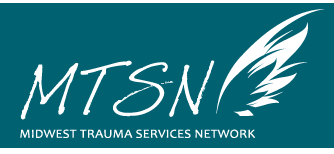What is trauma informed care?
“It is absolutely essential that the healing journey be understood from the survivor/warrior perspective. Which means safety and trust are unassailable elements of the beginning of a healing journey. ”
Trauma Informed Care, or TIC, is all over the place in social services these days. Everyone is getting on board with adopting TIC. Even training TIC has become popular. So, I think it is important to explore the meaning and possible consequences of being involved with TIC programs.
A few years ago the Attorney General convened a task force to examine the issues regarding children exposed to violence. The result of the year long process, in which 12 learned professionals toured the country and heard from in the trenches mental health workers, was a definition of TIC. I feel that it makes sense to use their definition as a platform for this discussion.
This is the definition they came up with: “Trauma-informed care is a new form of evidence-based intervention continuums and service delivery, implemented by multiple service providers, that identifies, assesses and heals people and their support systems injured by, or exposed to, violence and other traumatic events” (CEV task force report, 2014). This is also the definition adopted by the Iowa state legislature in 2016.
But what does it mean? Let’s dissect it a bit and get down to some brass tacks of TIC that are not well understood and that separate people who are saying they are doing TIC from those who are. The difference can be devastating for someone who is deeply wounded. It is one thing to know what you are supposed to do, it is quite another thing to actually be able to execute it.
Let’s start with the word “new” in the definition. For many people who work in social services it is not a “new” idea, to understand that trauma is impacting the way people behave. What is “new”, is the science that confirms that people are being compelled into certain behaviors and states as a response to genetics, epi-genetics, environment, temperament, gender, exposure and race. The result of this explosion of science, is an explosion of interventions, that may or may not be useful. Another result is a deepening divide between those who have a mentalist attitude regarding behavior and those who respond in a more curious and compassionate way? Can you tell which one I lean towards?
Those interventions are meant to be evidence based. Evidence based also has its supporters and detractors but since it is the requirement of most funding sources let’s stay in that lane for now.
So, the evidence base from the science perspective is broad and deep. Many fields of investigation are contributing daily to the ways in which human beings are affected by trauma, and the mediators and moderators of that exposure. An example of that is the announcement of a blood test that can detect childhood abuse exposure in some adults, decades after the abuse (Rachel Yehuda, NIH).
The definition of TIC says that care has to be implemented by multiple service providers (MSP). This means that they have to be on the same page of understanding what TIC is, and what interventions are necessary. This means that proper assessment has to be done. I am not sure that most agencies are even aware of what assessments for trauma are out there. I do know that if proper assessments are not being done that it becomes very difficult to actually be doing trauma informed care, and for me this eliminates 90% of those agencies that are claiming to do TIC.
Plenty of agencies are doing MSP work like family court and family team decision meetings (FTDM’s). However, not much is said about trauma that is functional, in my experience. Nor is it assessed for clients who are clearly trauma exposed.
So finally we get to the “heals” part of the definition. This is where we are totally under-prepared. The field of therapy is divided deeply regarding how trauma should be approached. I know what I believe and I know what I have seen work, both for myself, and for hundreds of others. So here is what I will say, it is absolutely essential that the healing journey be understood from the survivor/warrior perspective. Which means safety and trust are unassailable elements of the beginning of a healing journey. For many of the most wounded, the therapist has to be the witness to their despair. Therapists have to be willing and able to tolerate deep sadness and rage. Many are not, so it becomes easy to default to talk therapies and easy clients. That can’t happen, we are relegating really hurt people to life long institutional care. We must step up as a system to create a path for those who, through no fault of their own, had to adapt to neglect, abuse, and other traumatic events that they could not control. This then becomes a societal burden. We can not let this continue. We have to step up to our responsibility to take care of our communities. The positive consequences are immense and that will be the subject for our next blog.
“We are relegating really hurt people to life long institutional care. ”
In conclusion TIC is not a trivial thing, it is a multidimensional undertaking and there is great peril in not doing it right. What is quite clear is that the less people care about each other, the more likely we are to exploit and hurt each other. Every time we fail in an intervention with someone who has compromised attachments, they lose faith in society and become more oriented towards personal gain. This then is in opposition to society. We are creating the problem and we are leaving it to our children.
